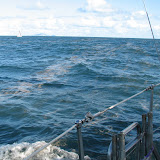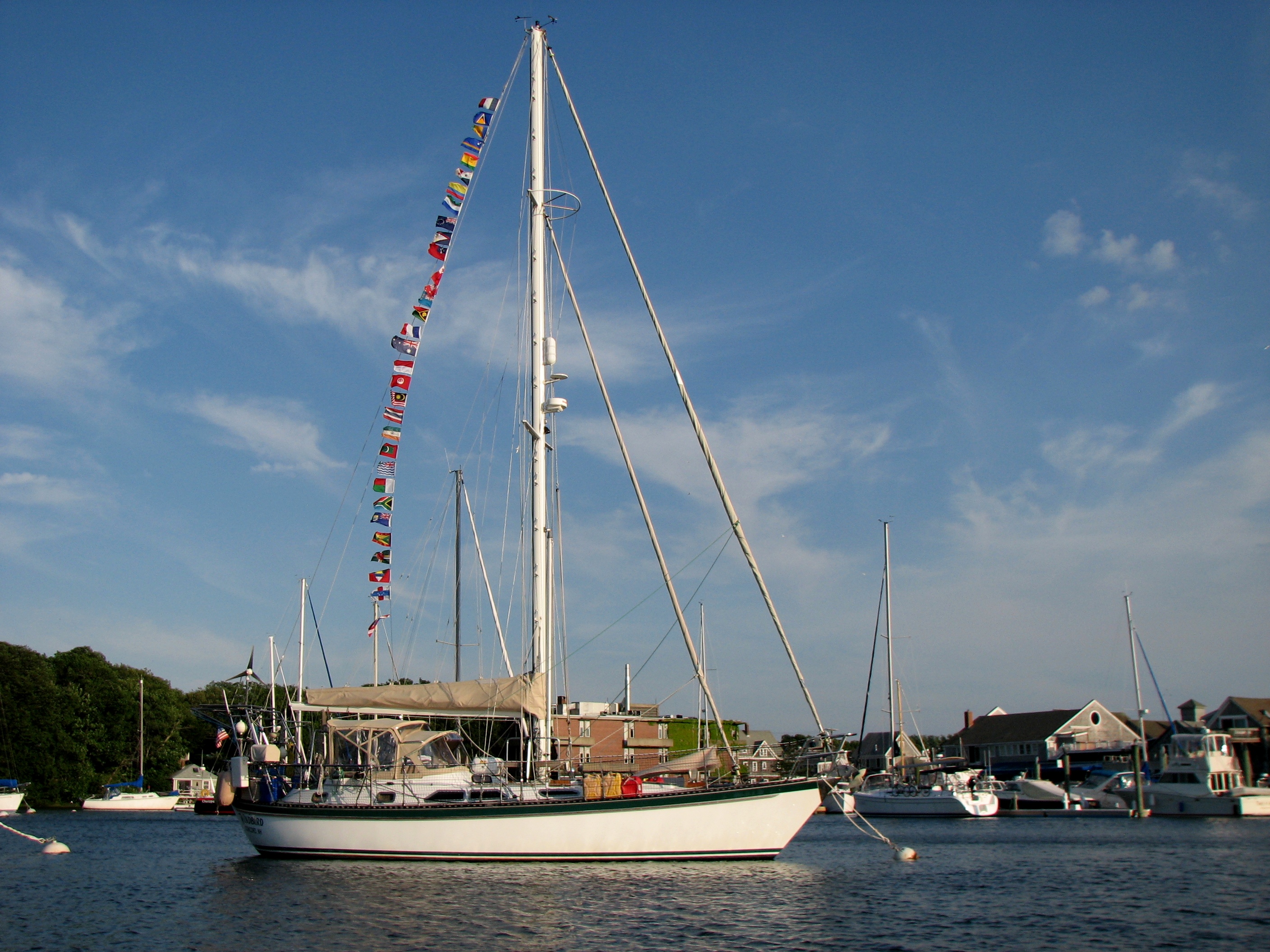Day 6, Year 3: Middle Percy to Scawfell Island
Date: Thursday, May 15, 2008
Weather: Beautiful Day; Winds SE 10-12
Water and Air Temperature: 73 degrees F
Latitude: 20 degrees 51.828 minutes S
Longitude: 149 degrees 35.930 minutes E
Location: Scawfell Island, Queensland, Australia
Out of bed at 3:30 am, up with the anchor by 4 am, motor sail all day, pull into the anchorage at 4:30 pm, sun goes down around 5:30 pm as Whiporwills on the island sing us an evening song. That was today in a nutshell. We knew we had to make the 62 nautical miles to Scawfell Island today as there was really no alternative, so onward we pushed. Unfortunately the winds were mostly around 10 knots from behind and that is not enough to push Windbird forward in a timely manner. Actually the motoring
wasn’t bad, however, as it helped to stabilize the boat a bit. I have felt a bit queasy the past couple of days from all of the rocking and rolling, so today was a bit better. We had thought about spending an extra day here, but we have decided to move on. We don’t have to leave as early tomorrow as we only have about 40 miles to go. That will then put us to within 40 miles of our destination in the Whitsunday Islands where we can finally go snorkeling. Can’t wait.
We have met a number of sailors from England and from Australia who all call the bathroom the “loo.” When I ask them why it is called a “loo” they don’t know, but they are quick to tell me that “bathroom” is certainly not the correct label unless there is a bathtub. They continue to tell me that “restroom” is not correct unless you are going to rest. Toilet is the only term we can agree on. While in New Mexico I was sharing this bit of information with our daughter-in-law who is from England.
When I asked about the origin of “loo”, she did not know either. Last night I received an email from her with the explanation. So now, thanks to my daughter-in-law Jo, I can properly inform my British friends. I love it.
“So, this is the reason we Brits call the john the loo . . . 18th century England, poor sanitation, crowded streets, assumption that saying something in French made it a little more polite (from back in the days when French was the language of the royal court…).
People would empty the chamber pot out the window and onto the street below (often very narrow streets, already littered with horse poo and rats and smelly people…).
As they threw the pot out, so as not to get the content all over passers-by, the thrower of the pot contents would shout ‘gardey-loo’ which was an awful English pronunciation and bastardization of the French ‘garde a l’eau'(guard a low)… this later became was shortened to just ‘loo.’
So there you go… just comes from old school manners when throwing poop!!”
Thanks, Jo.
 |
| 080515 Day 6 Percy to Scawfell |



Interesting info on “the loo,” although I was surprised to hear that the English folks were not proud of “the crapper” (credited to Sir Thomas Crapper of England) or since you are sailing, the English connection to “the head?” Here’s what I found at the toilet museum site about this: As early as 1485, the nautical term “Head” referred to the bow or front part of a ship. Typically, the ship’s toilet was placed at the head of the ship so that splashing water could naturally clean the toilet area (for that salty-fresh smell!). The use of the term “head” to mean toilet dates back to at least 1708, when English privateer and Governor of the Bahamas, Woodes Rogers, used the word to refer to a ship’s toilet in his book, “A Cruising Voyage Around the World.”
Actually the information on “the loo” was more interesting.
Ewww. Pretty gross to think about the contents of chamber pots being hurled from overhead onto the streets! Very interesting, though, how the term came to be. When I visited the Netherlands (in the 70’s), they called the bathroom the W.C., for “water closet”. I thought that was kind of odd, too. 🙂
Glad to hear that you reached your anchorage safely, and you’re that much closer to the snorkeling!